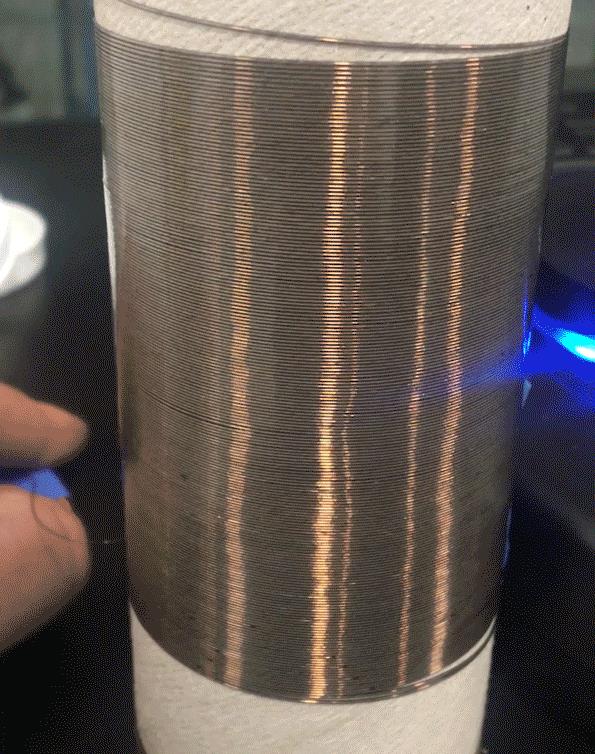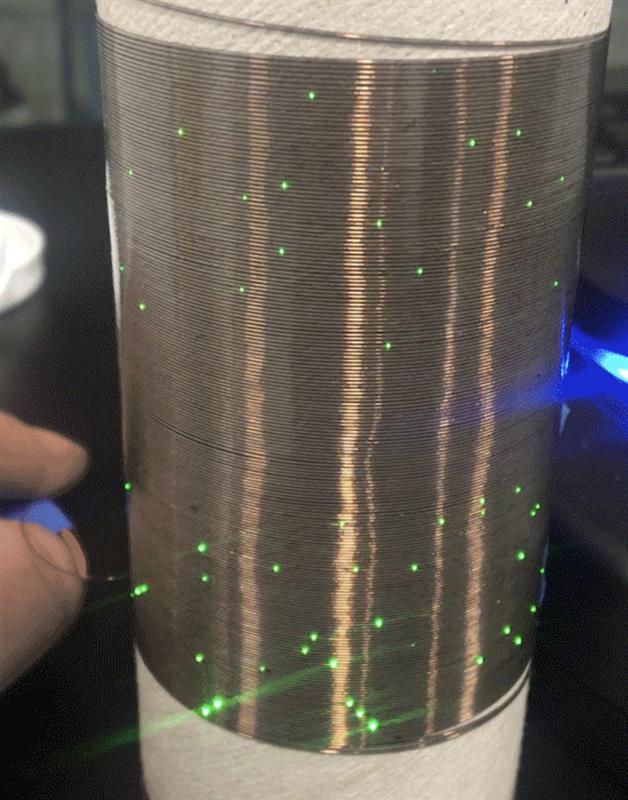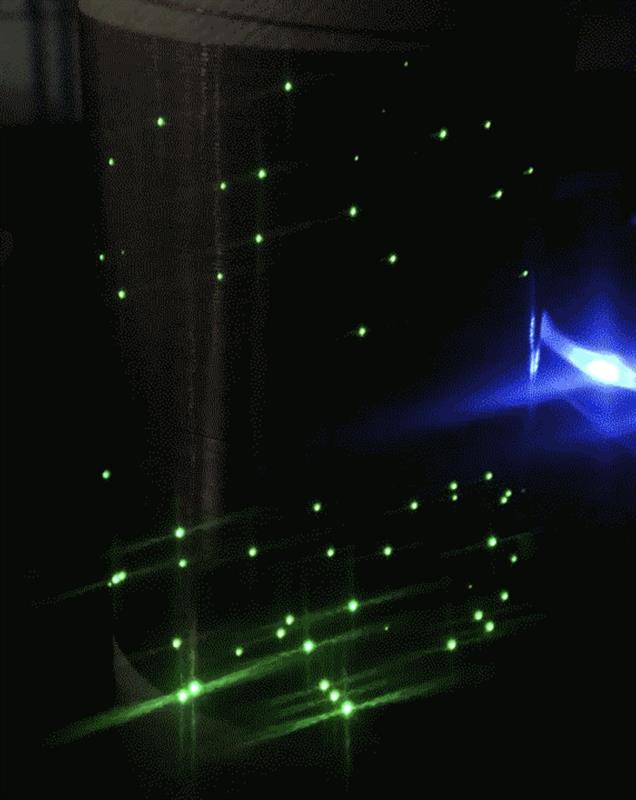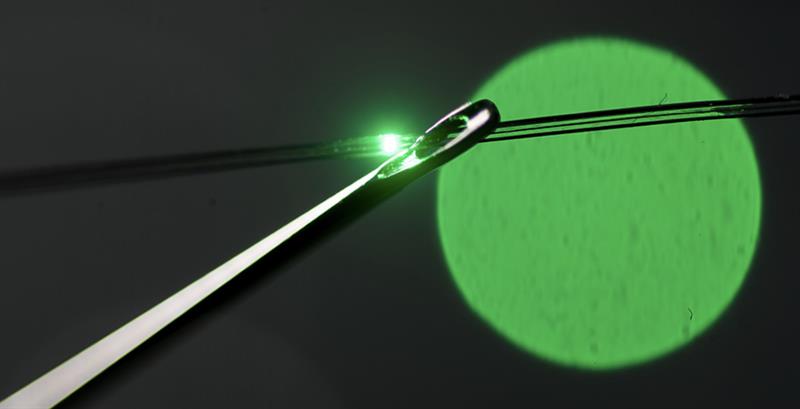The incorporation of these optoelectronic diodes by MIT could unleash a new “Moore’s Law” for fibres.
Traditionally, optical fibres have been produced by making a cylindrical object called a ‘preform’ – which is essentially a scaled-up model of the fibre – then heating it. Softened material is then drawn or pulled downward under tension and the resulting fibre is collected on a spool.
The key breakthrough for producing these new fibres, MIT says, was to add to the preform light-emitting semiconductor diodes the size of a grain of sand, and a pair of copper wires a fraction of a hair’s width. When heated in a furnace during the fibre-drawing process, the polymer preform partially liquified, forming a long fibre with the diodes lined up along its centre and connected by the copper wires.
In this case, the solid components were two types of electrical diodes made using standard microchip technology: LEDs and photosensing diodes. “Both the devices and the wires maintain their dimensions while everything shrinks around them” in the drawing process, former MIT graduate student andlead author, Michael Rein, explains. The resulting fibres were then woven into fabrics, which were laundered 10 times to demonstrate their practicality as possible material for clothing.




“This approach adds a new insight into the process of making fibres,” says Rein. “Instead of drawing the material all together in a liquid state, we mixed in devices in particulate form, together with thin metal wires.”
One of the advantages of incorporating function into the fibre material itself is that the resulting fibre is inherently waterproof. To demonstrate this, the team placed some of the photodetecting fibres inside a fish tank. A lamp outside the aquarium transmitted music through the water to the fibres in the form of rapid optical signals. According to the team, the fibres in the tank converted the light pulses to electrical signals, which were then converted into music. The fibres survived in the water for weeks.
| A spool of fine, soft fibre made using the new process shows the embedded LEDs turning on and off to demonstrate their functionality. The team has used similar fibre to transmit music to detector fibres, which work even when underwater. Credit: MIT |
MIT Professor and Rein’s research advisor for the project, Yoel Fink, says the first commercial products incorporating this technology will be reaching the marketplace as early as next year. “It's going to be the first fabric communication system. We are right now in the process of transitioning the technology to domestic manufacturers and industry at an unprecedented speed and scale.”
Beyond communications, the researchers believe the fibres could be used in the biomedical field. For example, devices using such fibres might be used to make a wristband that could measure pulse or blood oxygen levels, or be woven into a bandage to continuously monitor the healing process.












